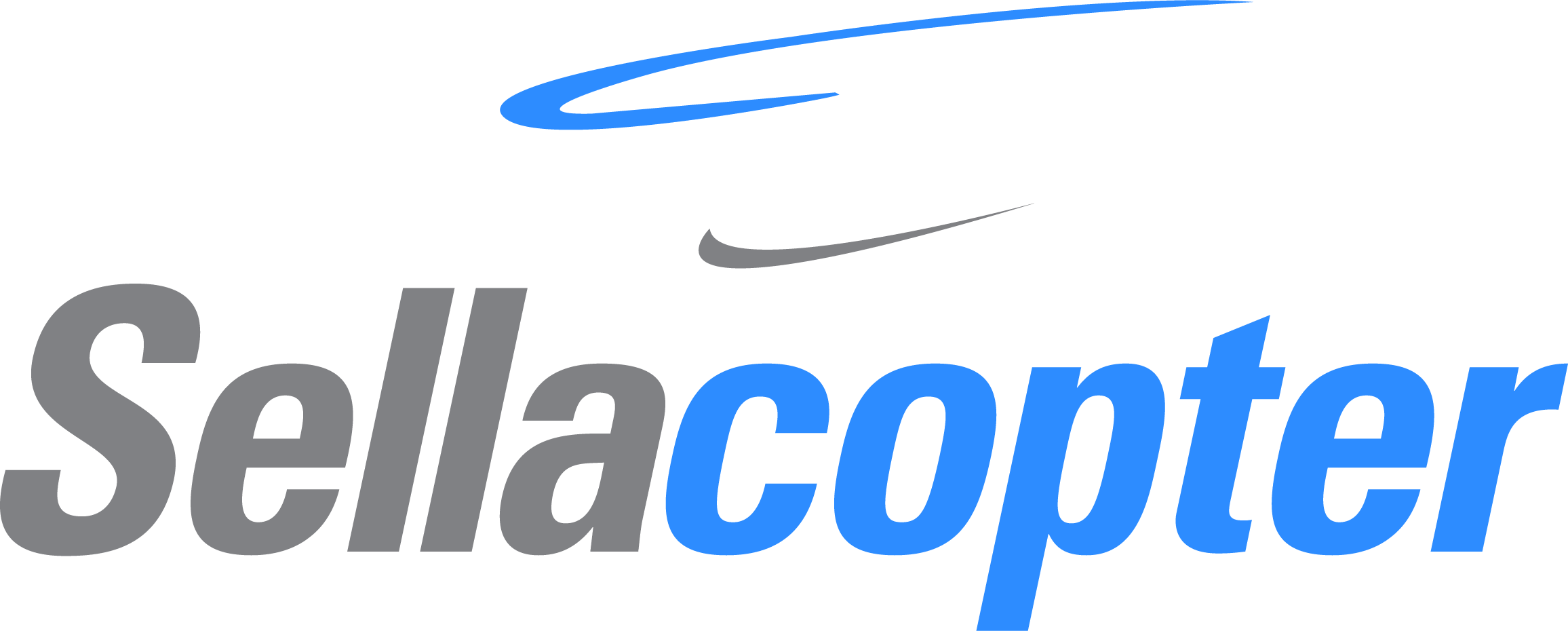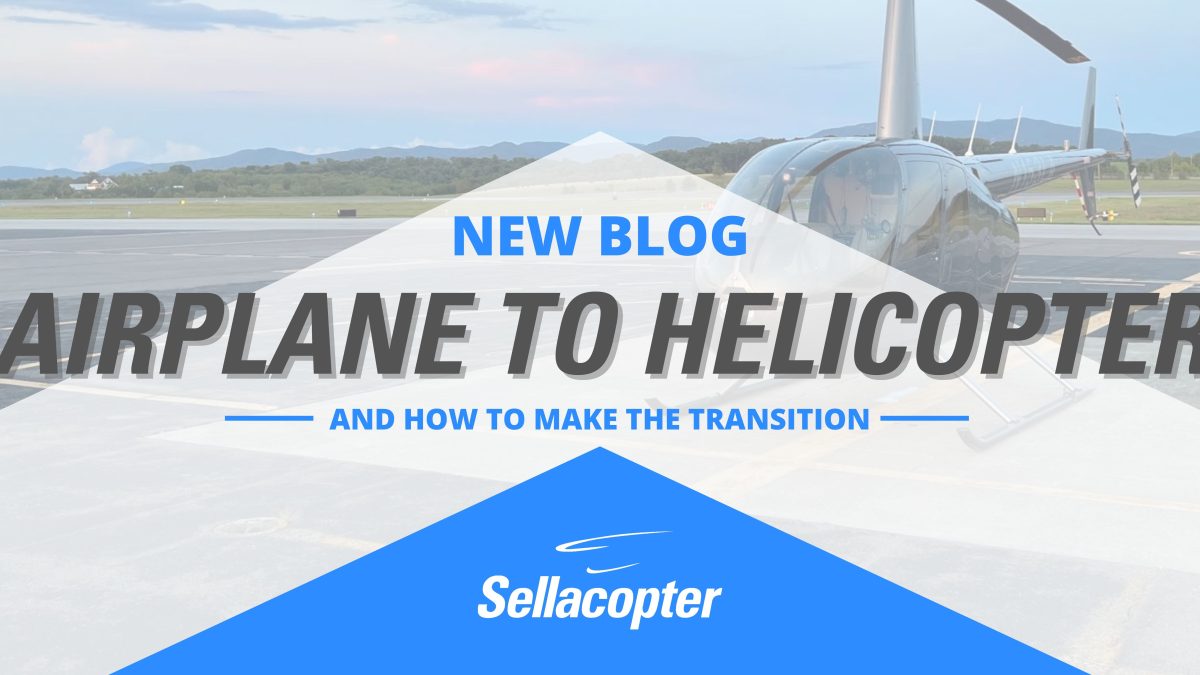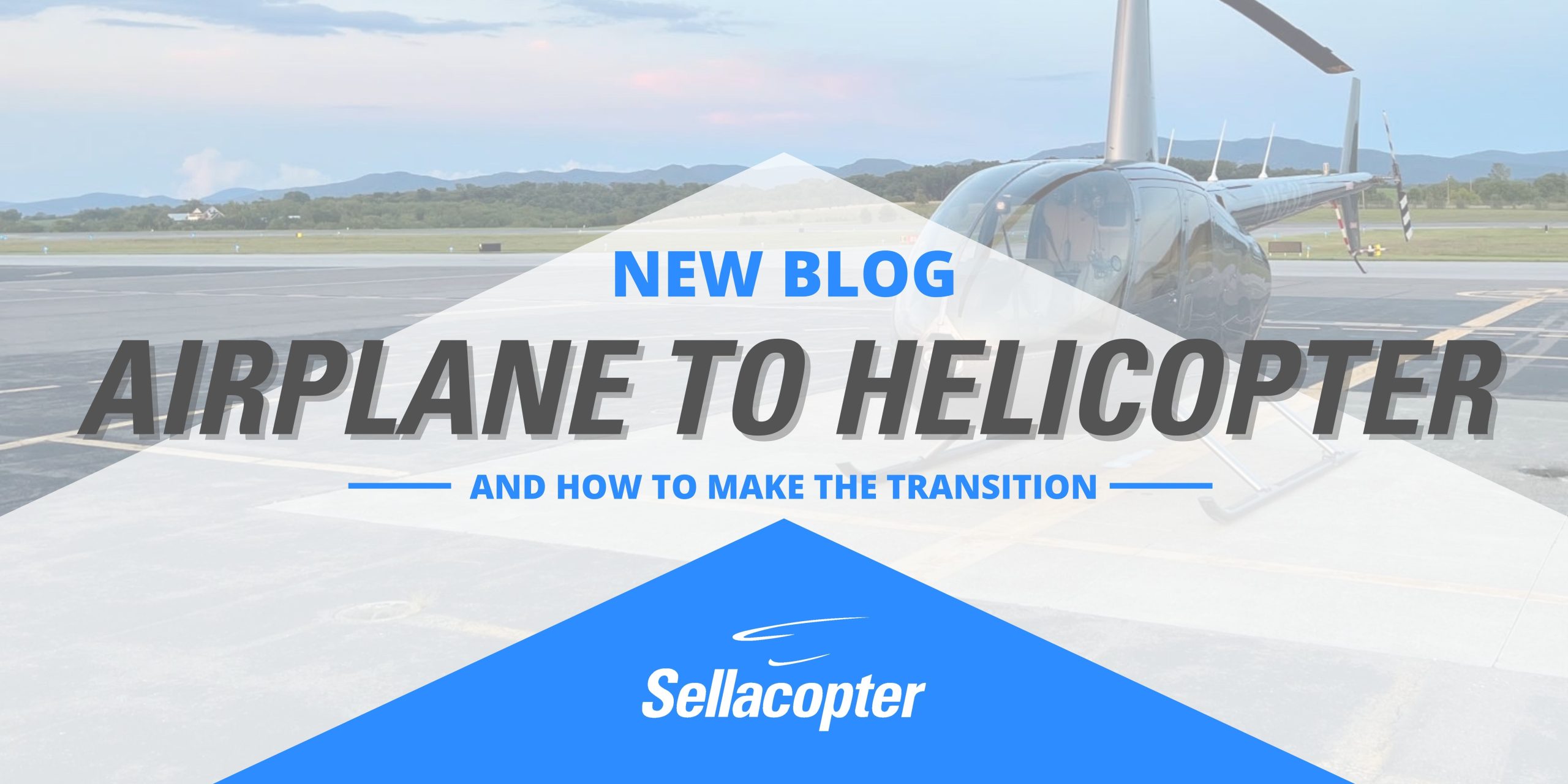- Sellacopter - List it. Sell it. Done.
- 1-855-SELLACOPTER


Transitioning from Airplane to Helicopter fying.
Transitioning from Airplane to Helicopter Flying
How to Transition from Flying Planes to Helicopters
As aviators, we are often unsettled when we are not progressing. I’m always thinking about the next airframe I can fly, the next challenge, and the newest ink I can add to my logbook. The next aviation box to check for many airplane pilots is transitioning to helicopters. Their airplane peers call them crazy, while our rotor community welcomes them with open arms.
I am often asked, “You’re a pilot; can you fly for Delta?” Of course, I have fixed-wing experience, but I always find that question beyond funny. Yes, both airplanes and helicopters fly, but that’s where the similarities end. In this blog, I’ll share my experience training airplane pilots to fly helicopters. I don’t have a ton of fixed-wing experience, so I would like to hear from my followers about their experience.
Everyone’s motivation is different. For example, some pilots who transition to helicopters need a new challenge, while some are looking for a new career path. In either situation, airplane pilots learning to fly helicopters can quickly and successfully make the change; however, it does come with a steep learning curve.
Cost of Helicopter Training
The first difference is the cost of training. If your background is flying airplanes, and you’re used to paying under $200 “wet” to rent your local C172 with CFI, then you’ll have some sticker shock looking at the hourly training cost for helicopters. Unlike their “stuck wing” counterpart, the rotating wing of a helicopter requires additional parts and labor for both scheduled and unscheduled maintenance. As a result, these extra operating expenses are passed on to the student pilot. Regardless of the airframe, helicopter training is never cheap. Before making the transition, ensure you understand the costs and are comfortable paying the increased hourly rate. Also, the minimum required hours (even for an add-on) are often exceeded to reach proficiency. Your flight school may tell you that 20 hours are needed when, in reality, it may take 30-50 hours.
An old mentor of mine always said, “An airplane wants to fly, and helicopters beat the air into submission until somehow they magically fly!” I always found this funny, but it’s true. Airplanes are inherently stable; helicopters are inherently unstable. While flying a helicopter, setting trim and removing your hands from the controls is not an option, this is standard and achievable while flying an airplane. I respect any pilot; however, the control and stick skills necessary to fly a helicopter are much more prevalent when flying a helicopter vs. an airplane.
My airplane students are often surprised at the sensitivity of the controls as opposed to the more significant control inputs they are used to when flying an airplane. Some pilots think their ability to fly a plane will automatically translate, leading to extreme frustration when their previous airplane control techniques hinder them at the beginning of their helicopter training. Be patient and give yourself “grace.” Your airplane muscle memory can make helicopter control very awkward at first.
Understand the Differences
Beyond the extreme difference in control, it is my opinion that helicopters can present some increased safety considerations if you are transitioning as a hobby. Any type of aircraft can hurt you, but as a low-time, freshly transitioned helicopter pilot, your margin for error is much less than what you may be used to when flying an airplane. You may have a false sense of ability based on your past airplane experience, and this can often lead you down an unforgivable path.
If you are an airplane enthusiast, don’t allow yourself to think you are better than you are. Never let your past airplane flight time influence your perception of your helicopter abilities. I would also recommend that after you complete your transition, fly, have fun, and get better – but don’t discontinue your training altogether. Make it a habit to fly with a CFI quarterly (or more) to work on advanced maneuvers. Unlike in an airplane, where a student pilot can go and practice stalls, steep turns, short field landings, etc., practicing maneuvers in a helicopter (like autorotations) should only be done with a CFI on board.
The good news? A lot of your previously acquired airmanship and understanding of FAA regulations transitions to helicopters. Your radio calls, for the most part, are all the same, many of the same rules exist, and a plethora of already learned knowledge and experience will translate. Because of this, the FAA allows “add-on” certificates and ratings that often have decreased aeronautical experience and ground training requirements. Less dual given and less ground training could mean that your add-on training will cost less than if you were starting from scratch. When you find your flight school, work with your instructor to see the best path. Should you consider a private add-on, or if you are already commercially certified, does going straight to a commercial helicopter add-on make the most sense? This will differ based on your previous airplane experience. Do your due diligence before training to ensure you pick the correct path.
Embrace the Transition
As a newly transitioned helicopter pilot, you will love the freedom of a helicopter; you are no longer bound to 3,000 ft. runways. I think you will enjoy the extreme new challenge of flying a helicopter compared to an airplane. Aerodynamically the two machines couldn’t be more different: this will be challenging at first, but you can figure it out. When you complete your transition, be extra mindful of your decreased margin for error and never stop learning. If done correctly, airplane pilots turned “rotor heads” can be excellent helicopter pilots!
Are you an airplane pilot that has recently switched over to helicopters? Our followers would love to hear about your experience and insight. Feel free to email me at halsey.s@sellacopter.com, or if you found this blog via social media, share your experience in the comments!
Written by Halsey Schider
CEO and Founder of Sellacopter.
